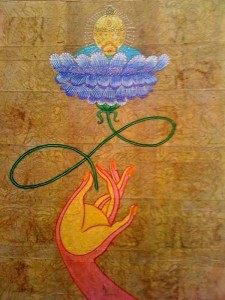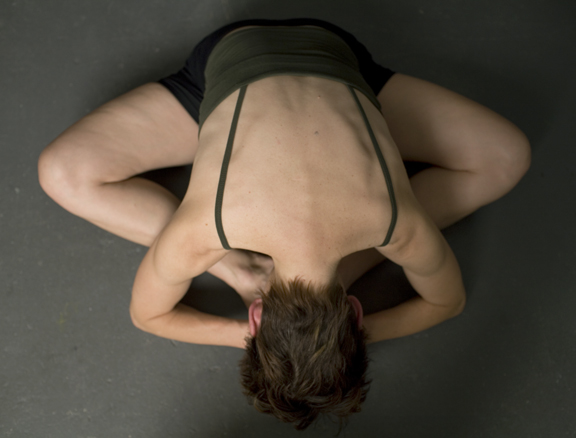SEASONAL SELF-CARE BLOG
Spring Cleanse
Posted on May 13th, 2015

I just made my first batch of Kitchari for my Spring cleanse. It is delicious and I feel ready to detox! Now that the weather is warm, it’s the perfect time to dive in and do your Spring cleanse! In fact every cell in your body is begging you to cleanse the congestion out of your liver and gall bladder organs. Once cleansed, your will feel calm, stress and tension free, decisive, insightful, emotional ease, and in contact with our personal power and capacity for leadership that are the attributes of a balanced liver network. Invite a state of balance and vibrancy into you being!
It is often difficult to slow down our busy lives and take the time to properly do a juice cleanse. Particularly if you are vata dosha, it is more effective do a traditional Indian Kitchari cleanse for 3-5 days. Kitchari is a simple cleansing highly nutritious combination of mung beans and rice. It both cleanses your system and strengthens your memory.
Whether you choose to do a juice cleanse, or a mono diet like kitchari, it is essential to offer ways for the toxins to leave your body. I find it most effective while doing a cleanse to be sure to continue to take plenty of balancing, nourishing and purifying baths. The skin is the largest organ in your body and a large part of our detoxification process. See our Spring Practices post on purifying seaweed baths!
KITCHARI
by Annie Kunjappy
chef for Yoga Sukhavati Seasonal self-care workshops
1 cup mung beans (soaked overnight)
1 cup brown basmati rice
1 onion diced
8 cloves garlic chopped
1 cup finely sliced leeks
1” piece ginger chopped
4 Tbsp coconut oil
2 tsp ground coriander
2 tsp ground turmeric
1 cup chopped scallions
½ cup chopped cilantro/parsley
Sea salt and lime/lemon juice to taste
Cook mung bean in pot with 4 cups of water and a half teaspoon of sea salt until soft.
Cook basmati rice in 2 cups of hot water until done.
In a separate pan, heat coconut oil, sauté onions until soft. Add leek and continue until soft. Add garlic, ginger, coriander and turmeric and sauté for 1 minute.
Mixed together the cooked beans and liquid with the cooked rice, and the sauted ingredients.
Add chopped scallions and cilantro.
Season with lime juice and sea salt to taste.
Spring Yin Pose
Posted on April 27th, 2015
Spring Yin Pose: Baddha Konasana (Leigh Evans)
As the gorgeous green sprouts push their way up out of the ground, the Spring young yang energy catapults us out of our hibernation. Hold on because though exciting and beautiful, Spring can be a bumpy ride. Do you feel irritable, angry, stressed out or restless? Are your shoulders and neck tight? Do you have headaches, eczema or other skin issues? Are your eyes strained more than usual? You may be experiencing signs that your Spring organ network, liver and gall bladder organs, are overloaded with toxins and need some purification and loving attention. It is a great time to do a cleanse, but we can also use our seasonal yoga practice to help smooth out the bumpy ride.
Seasonal asanas helps us harmonize our inner rhythms with the energetic movements of each season, enhancing our interconnectedness with the environment. With skillful practice of asanas that target our Spring organ network, we can help our body and mind stay balanced during the jolting ascending energy of the wood element this Spring. Practiced with deep awareness, Spring asanas can help release congestion and awaken prana in the liver and gall bladder meridians.
If you’re feeling over stimulated and agitated this Spring, try the beautiful yin pose, Baddha Konasana folding forward to stimulate both the inner leg lines of the liver meridian and outer hips of the gallbladder meridian. This deeply calming pose will help smooth out the emotional roller coaster that comes with an aggravated liver network. Be sure to rest your forehead on a pillow or bolster to help release the agitation in the mind. Pay particular attention to softening and relaxing the eyes which are are associated with these organs. Allow your exhalations to lengthen and deepen as you rest in the pose.
Q&A with Nicole Lynne Hooley
Posted on April 1st, 2015
We chatted with Yoga Sukhavati graduate Nicole Lynne Hooley about how she came across yoga, how it’s changed her and how Yoga Sukhavati was the right path for her.
When did you start practicing yoga? How did you find yoga?
I started practicing yoga in 2006. At the time I was grieving my grandmothers passing and someone gave me a couple dvd’s and said that they thought I would enjoy them. I did, however looking back they were super easy dvd’s. I used them for a few years actually. I later took a course in college called Yoga: East Meets West and this course included Eastern Philosophies, the History of the Yogic Traditions and how it made its way into America. During the course we were required to take 2 yoga classes a week at a local yoga studio for free! This was incredibly awesome and really changed my life!
How has the practice changed your life?
The practice has made me a stronger person both physically, emotionally and spiritually. I have learned so much about myself through yoga and Eastern philosophy.
What do you like most about teaching yoga?
I am not sure if I can describe what I love about teaching yoga. It is like no other experience I’ve really ever had. I suppose what I love most is seeing people’s bodies change and witnessing people’s awareness shift over time. The little instances where you see an “Aha” moment take place on someone’s face. I get a lot out of teaching. From my first time teaching I could feel it was something I had always been preparing for. It makes me want to be a better person. It also makes me want to be imperfect. Teaching yoga is an incredible teacher for me. It really is a sacred blessing that I am deeply grateful for.
What were you doing before you took your training?
Before I did my initial 200-hour teacher training with Leigh Evans I was an Environmental Activist with Greenpeace USA. I deeply wanted to help heal a world that seemed to be going under fast. This work was satisfying in many ways in that I felt that I was doing something about the serious issues facing our ecosystem, oceans and wildlife. However, the stress of being face to face with the indifference of our population broke my heart in a very deep way. After a year I was no longer able to do the work without showing my overall sense of heartache and disappointment. I spent a year after Greenpeace in transition. During that time I took 5 yoga classes a week and practiced at home on my own when I couldn’t afford the subway or a donation for class. This was an incredible time. I could see my body transforming, and I could feel my heartache lifting.
Why did you decide to take a 200-hr teacher training?
6 months or so into my regular Yoga Practice I was at a Christmas Dinner at my partner’s family’s home. His now deceased grandmother asked me, “So Nicole what are you doing?” She meant in regards to work, of which I had no real response so I answered, ” I’ve just been doing yoga.” She responded, “Oh, you are going to teach Yoga? That’s great!” My face turned a little red, as I had contemplated the possibility but wasn’t confirmed by any means but without thinking I said, “Yea!” That night I started researching different local trainings.
What stands out the most about your experience from your teacher training?
I think for me what stood out the most was how equipped I felt to start teaching right away. We were encouraged to start practice teaching as much as possible. This was exhilarating for me, in that I was very shy and needed a way to start to open up more. We had an assignment to do a community project. Mine ways called “Yoga Under The Sun” where I offered free classes in the park. I had great turn outs for the time I was in the training. It was great experience and I know that the assignment can be attributed to my finding professional classes soon after I graduated!
How was it to work with Leigh?
I’ve done two trainings ( 200HR & 300HR) with Leigh and I can honestly say that she is now one of my lifelong mentors. I feel so blessed to have her as a teacher and guide. Leigh has challenged me in ways that I truly needed to be challenged. She was wiling to give me the feedback I needed to grow as a teacher and human being, even when I was not willing to hear it. With that she also was there to point out how I had made progress and encouraged me to be my authentic self. Learning under Leigh has been a joy that I am very grateful for.
What stood out to you about the Yoga Sukhavati 300-hour training?
I love that Yoga Sukhavati acknowledges that benefits of different practices for different people, seasons, and stages in life. It is not a cookie cutter training that assumes that all bodies and people are the same. It is instead designed for real people and gives practitioners tools and means for a safe and healing practice.
What advice would you give to someone who was on the fence about doing a 200-hour teacher training?
If you are thinking about doing a 200-HR training, you have already reached the glass ceiling. You are ready to go deeper and expand your practice. When considering your training I advise making sure that you are setting yourself up to participate in one that will not only give you a certification, but one that will take you deeper into your truest self, create a path where you are skilled and ready to teach, and provides you with continued support to grow and shine. Yoga Sukhavati is this program and Leigh Evans is that teacher.
Side Note from Nicole: Thanks to my participation in the Yoga Sukhavati training’s I am now a full time Yoga Teacher with a daily yoga practice and a very fulfilled and happy life! Thank you!
You can find Nicole teaching at studios all over Brooklyn, New York. For her schedule, visit her website and facebook page.

